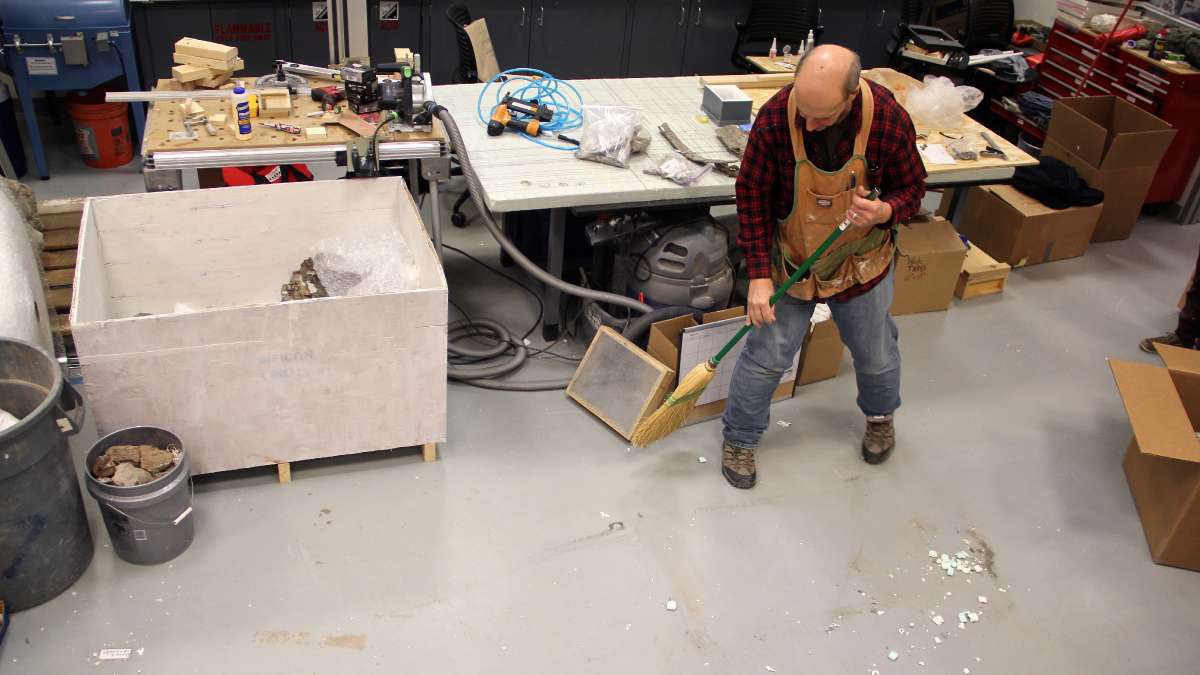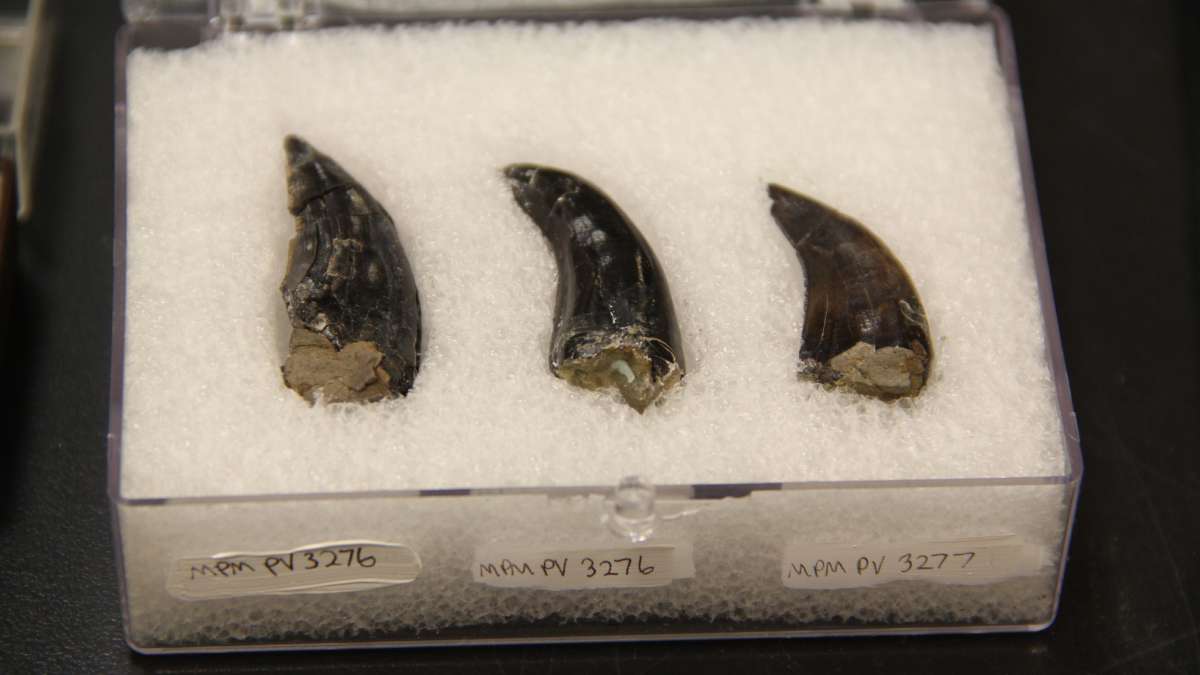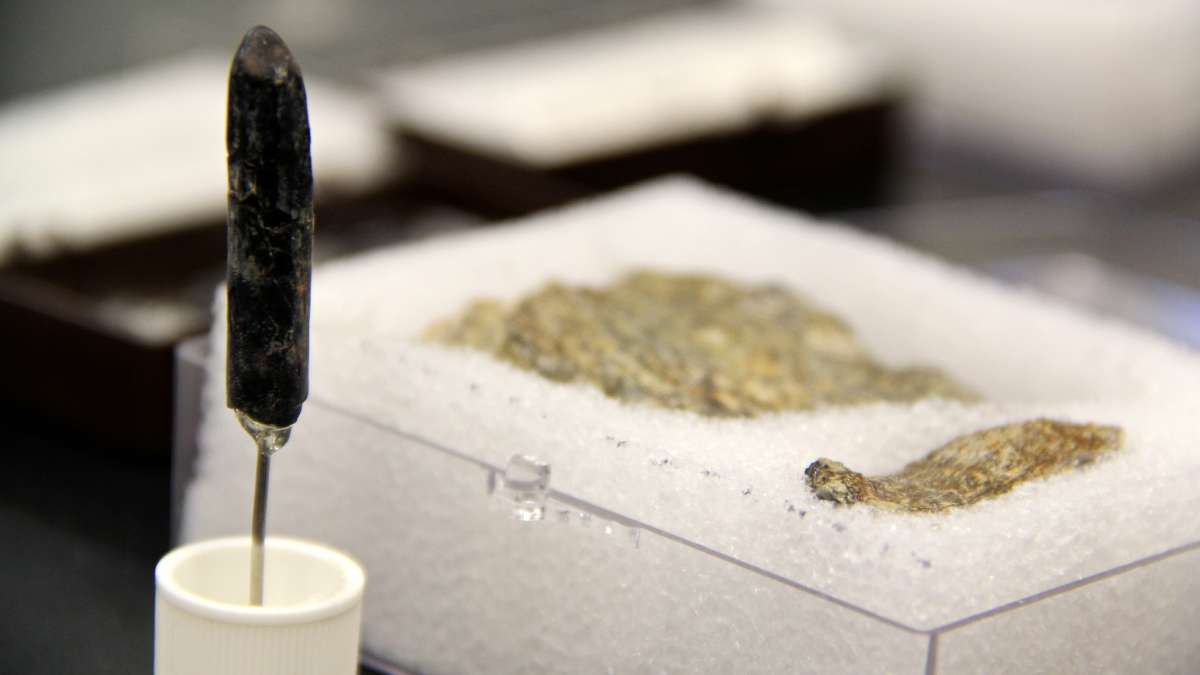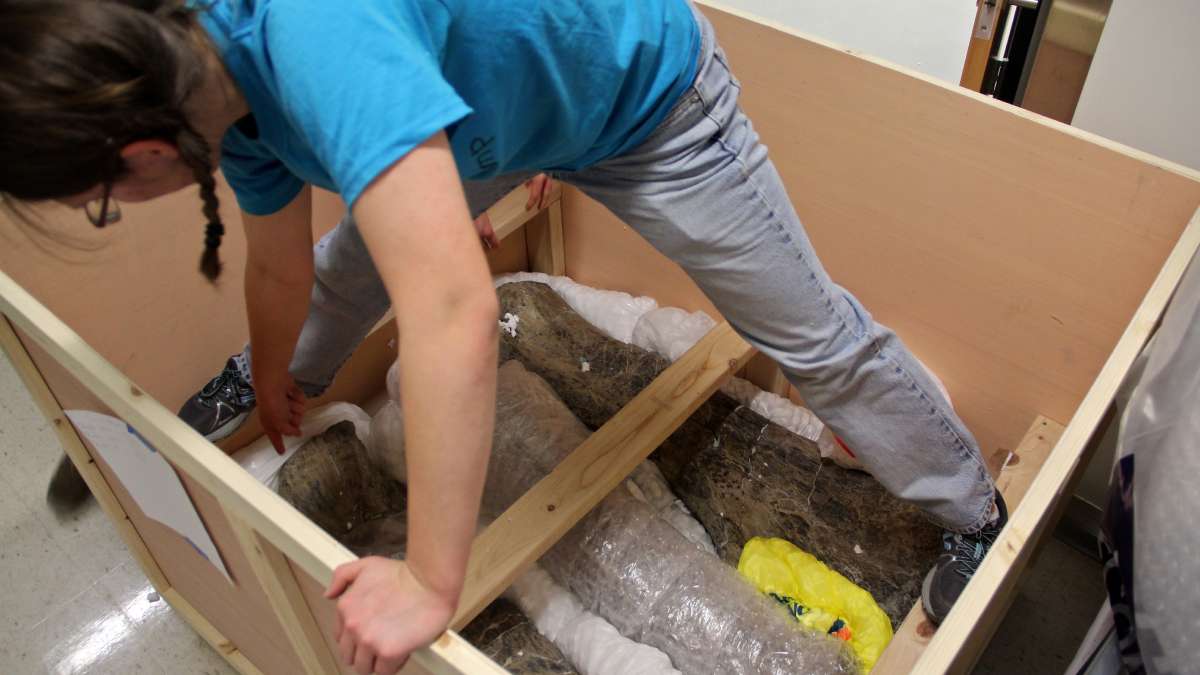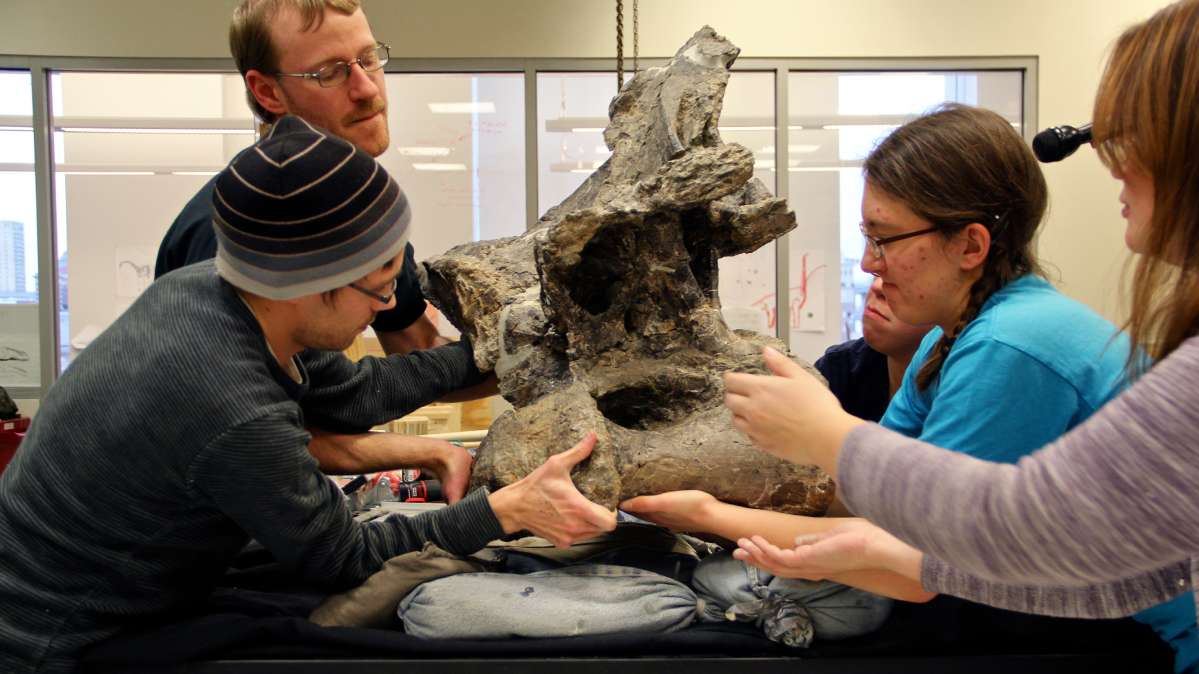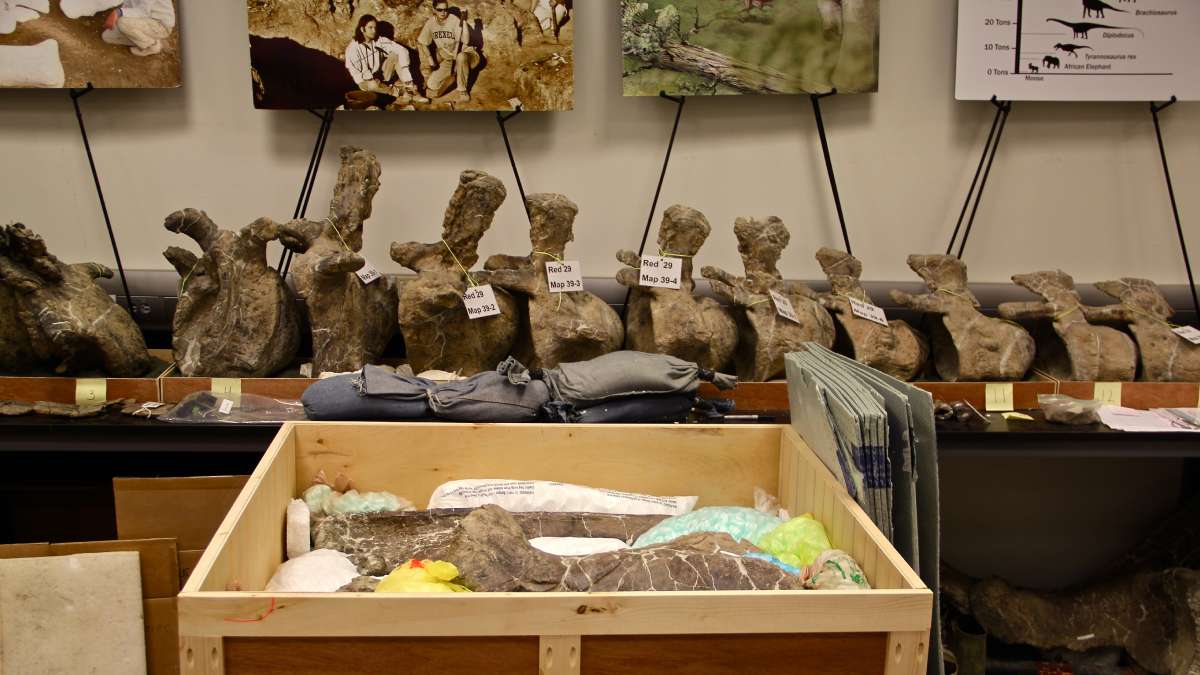Dreadnoughtus prepares to go home
ListenAfter more than a decade spent uncovering, cleaning, studying and preserving the bones of one of the largest dinosaurs ever discovered, Drexel paleontologist Ken Lacovara is finally packing up Dreadnoughtus’s remains to ship them back to Southern Argentina.
“In most countries, the fossil antiquities belong to that nation,” Lacovara said. “And that is the case in Argentina, and so we’re happy to send it back to its home country. It’s a bittersweet moment for us, but it belongs in Argentina.”
Lacovara’s usually tidy lab looked like Christmas morning in a house full of toddlers this week as his students worked around the clock to pack up the remains of the 65-ton herbivore.
There was much careful strategizing and grunting as five students slowly lowered a massive vertebra from a work table into a wooden crate on the ground below, carefully communicating about how to maneuver the 77-million-year-old bone, which weighs hundreds of pounds. After the bone was placed, the team slipped plastic grocery bags filled with packing peanuts underneath and around the edges for padding. The bones will be shipped in roughly 100 boxes and 50 wooden crates Lacovara built himself at the lab.
“You can’t just go to Home Depot and buy a dinosaur crate,” Lacovara laughs.
After being loaded into a shipping container early next week, Dreadnoughtus’s remains will set sail for Buenos Aires from the port of Philadelphia next Friday. Lacovara said he plans to raise a glass to the ship as it sails by.
“I’ve spent an awful lot of time with Dreadnoughtus,” Lacovara said. “There was a time when I was sick in the quarry down in Argentina, had a fever and I remember just curling up around one of the bones with a blanket on me. So I’ve had quite a relationship with this animal. I’ll definitely be sad to see Dreadnoughtus go.”
A whole generation of students who did their undergraduate or graduate research, or both, on the dinosaur will be sad to see the bones go as well. Aja Carter volunteered in Lacovara’s lab as a high school student, worked on Dreadnoughtus throughout college, and just started on her PhD in paleontology at the University of Pennsylvania. She returned to the lab Tuesday to help the team box up the bones, a process Lacovara expects to take three weeks.
“There’s a bone in there that I worked on that was kind of like my first big project as a preparator, my first chance to prove myself, and it’s packed away now,” Carter said. “It’s weird saying goodbye to something that’s been in your life for so long.”
Dreadnoughtus’s remains will be housed in a small museum in the Santa Cruz province of southern Argentina. Both the national museum there and the Academy of Natural Sciences in Philadelphia hope to display 3-D printed versions of the skeleton.
Correction: An earlier version of this story misspelled Aja Carter’s name.
WHYY is your source for fact-based, in-depth journalism and information. As a nonprofit organization, we rely on financial support from readers like you. Please give today.



